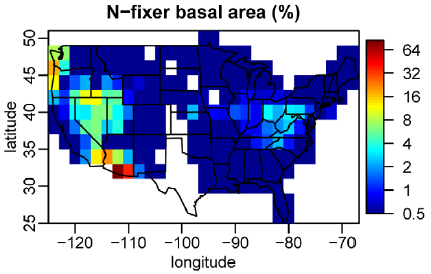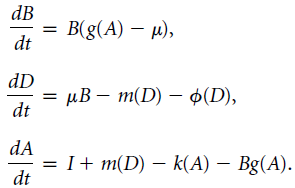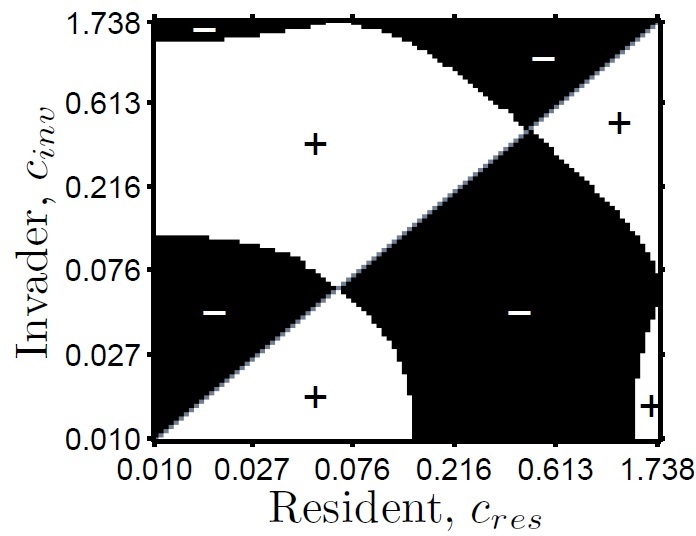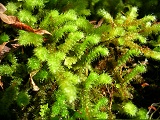| Home People Research Publications Opportunities Teaching Links |
Menge Lab Research
|
Major funded projects
LTER: The role of climate variability in controlling arctic ecosystem function (NSF DEB 2224743, 2023-2029) Quantifying the temperature responses of symbiotic nitrogen fixation and its carbon cost (NSF IOS 2129542, 2021-2025) Novel multi-scale synthesis of nitrogen fixation rates and drivers across the terrestrial biosphere (USGS Powell Center, 2018-2023) Does a transition in nitrogen fixation strategy explain the latitudinal distribution of nitrogen-fixing trees? (NSF DEB 1457650, 2015-2020) Reactive nitrogen biogeochemical cycling in the GFDL Earth System Models: Advancing understanding of atmosphere-land interactions under changing climate and land use (NOAA NA15OAR4310065, 2015-2018) |
|
 |
Overview
Research in the Menge lab addresses fundamental questions in ecosystem ecology using theory, observations, experiments, and data synthesis. Although much of the focus is basic science, our work is highly relevant to pressing societal concerns such as global climate change and eutrophication because of the intimate connections between nutrients, plants, and greenhouse gases. The following themes characterize research in the Menge lab. |
 |
Ecosystem theory
The theoretical foundation of ecosystem ecology lags behind other ecological disciplines, despite the wealth of benefits that theory can bring. A main thrust of research in the Menge lab is to continue building the theoretical foundation of ecosystem ecology. |
 |
Evolutionary biogeochemistry
"Nothing in biology makes sense except in the light of evolution" (Dobzhansky). "Ecosystems are prototypical examples of complex adaptive systems, in which patterns at higher levels emerge from localized interactions and selection processes acting at lower levels" (Levin). We use mathematical theory and data analysis to investigate how evolution affects questions in ecosystem ecology and biogeochemistry. |
|
Nitrogen fixation
"Water, water everywhere, nor any drop to drink" (Coleridge). Sailors are surrounded by water, yet risk dying of thirst because seawater is undrinkable. Similarly, most plants are bathed in nitrogen, yet often suffer nitrogen deficiency because they cannot use dinitrogen gas. Nitrogen-fixing bacteria, and the plants with which they form symbioses, are in a unique position because they can use this inexhaustible resource. Because of this, they are involved in lots of interesting questions in ecosystem ecology and biogeochemistry. Also, "nodule" is really fun to say. |
|
|
Nutrient limitation
Nitrogen and phosphorus commonly limit plant growth and other ecosystem processes. The patterns of nutrient limitation are often counterintuitive. We use a combination of theory, experiments, observations, and data synthesis to try to address this broad topic. | |
 |
Nitrogen richness
Some ecosystems emit lots of nitrogen, either as nitrate (which pollutes waterways) or as gaseous nitrogen (which pollutes the air or contributes to global warming). In some places this "nitrogen richness" is driven by human activity, primarily via fossil fuel combustion or fertilizer application. In other places it appears to be driven by nitrogen fixation, even though we think that fixing nitrogen is more expensive than using soil nitrogen. Why does this happen? What are the consequences? |
|
Stoichiometry
Ratios of different nutrients, such as carbon, nitrogen, and phosphorus, often display well-constrained patterns. These patterns themselves are interesting, as are the insights they give us into ecosystem processes. | |
|
Scale
"[Scale] is ... the fundamental conceptual problem in ecology, if not in all of science" (Levin). So it's big. Or ... small. Ecosystem and biogeochemical processes operate on vastly different scales of time, space, and level of organization, and patterns at one scale are often influenced by processes at other scales. Scale is a theme running through research in the Menge lab. For example, the development of ecosystem nutrient cycles occurs across a huge range of timescales, which we study empirically and theoretically. | |
 |
Modeling
Global models are our best tools for making quantitative predictions about global environmental issues such as climate change. Take a look at any IPCC report and you will see their importance. The Menge lab is working with modeling groups to develop their representation of nutrient cycles. |
dm2972[at]columbia[dot]edu, (212) 854-6889
10th floor, Schermerhorn Extension
1200 Amsterdam Ave., New York, NY, 10027
